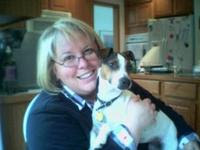I was inspired by James McCusker's column in the Sunday, 8/31 Herald, "Certification would help college grads prove their skills," regarding Charles Murray's book: Real Education: Four Simple Truths for Bringing America's Schools Back to Reality. As an educator, a certified I.T. professional and an advocate of industry certification, I was especially attracted to the idea of certification as assessment. It is a natural partner to the concept of "education virtually anywhere."
What I like about this idea is that it firmly places the responsibility for what a person knows on the individual rather than the education system. Certification requires a personal commitment to learning a body of knowledge and being able to demonstrate skills, measured by some independent external assessment body. In my work with our college's accreditation over the past few years, I have been actively involved in discussions about assessment and accountability in higher education. However, the focus of educational reform has often been on making institutions more accountable for success of students, rather than emphasizing the motivation for students to take responsibility for their own learning. Standardized tests such as the WASL are used to rank institutions and control funding. They do little to encourage assessment as a tool for students to manage their own life-long learning. For most traditional college students, attaining a degree has become a simple test of survival. If you can stay awake (and sober) enough to pass all your classes, and you can afford to pay for at least 4 years of college, you can get a degree. On the other hand, the professional credentialing process is all about setting personal knowledge-oriented goals and striving to attain them.
I began to imagine.... what if MOST employers valued certification credentials more than college degrees? What would that do to the world of academia?
- To exist, colleges would have to truly focus on the individual student's needs and on REAL assessment. Colleges or programs would be judged on their ability to help students prepare for externally administered evaluations, rather than graduation rates.
- There would, undoubtedly, be an outcry from academics who teach liberal arts and "soft" skills that do not easily translate to specific professions or certifications. Purely academic programs may have to justify their existence and demonstrate their value.
- Same place, same time models of teaching would be challenged. Individuals could gain the knowledge needed to attain certification from many different sources, at anytime.
- The cost of college would no longer be a factor. As long as you could pass the exams, it wouldn't matter if you went to school at Harvard or learned from sites on the internet.
- Life-long learning would be expected. There would be no need to confine your education to a 4 year program, or earn "credits" from a single institution. You could pick up knowledge on your own terms - on your own time table.
- Colleges would have to rethink the traditional efficiency-based models of offering programs. Maintaining optimum student-to-faculty ratios will no longer be a relevant measure of productivity for educational institutions.
- Colleges would have to really focus on the services they offer and the value they provide to learners - such as providing resources and administering assessments. Perhaps even moving toward a "health-club-like" model of subscription-based education. (See Corey's Advisory Bored blog entry "Basic Cable").
- For certifications to be rigorous and meaningful, employers would need to become more actively involved in the development and validation of certification assessments. Employers would have some "skin in the game."




